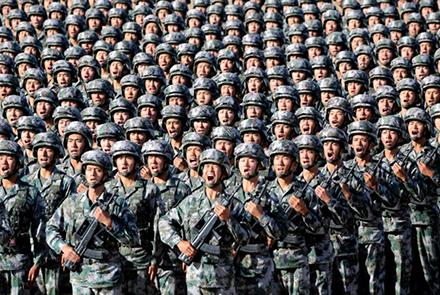China unveiled its largest rise in defense spending in three years on Monday, setting an 8.1 percent growth target compared to 2017, fuelling the country’s ambitious military modernization program amid rising Chinese security concerns, Reuters reported.
The 2018 defense budget will be 1.11 trillion yuan ($175 billion USD), according to a report issued at the opening of the country’s annual meeting of parliament.
The defense spending figure is closely watched around the world for clues to China’s strategic intentions as it develops new military capabilities, including stealth fighters, aircraft carriers and anti-satellite missiles.
China will “advance all aspects of military training and war preparedness, and firmly and resolvedly safeguard national sovereignty, security, and development interests”, Premier Li Keqiang said in an address at parliament’s opening session.
“Faced with profound changes in the national security environment” the absolute leadership of the military by the ruling Communist Party must be observed, and the unity between the government and the military and the people and the military must always be“strong as stone”, he said.
The 2018 defense spending increase comes as China’s economic growth expanded 6.9 percent last year, the first acceleration in annual growth since 2010. But China kept its 2018 economic growth target at around 6.5 percent, said Li, the same as in 2017 despite exceeding that year’s target.
Last year, defense spending was set to increase by just 7 percent, to 1.044 trillion yuan ($164.60 billion) about one-quarter of the proposed U.S. defense spending for the year. In 2016, it grew by 7.6 percent.
“The pace and scale of this build-up is really dramatic. It is extremely alarming for Australia and many other countries in the region,” said Sam Roggeveen, Visiting Fellow at the Strategic and Defense Studies Center, Australian National University in Canberra.
“There is every indication that China wants to expand what it will call defense capabilities in the South China Sea. I expect eventually we will see warships and aircraft there regularly, if not based there permanently. What is unclear, however, is whether the United States will want to rise to that challenge.”
China does not provide a breakdown for how it allocates its defense budget, leading neighbors and other military powers to complain that Beijing’s lack of transparency has added to regional tensions.
Diplomats say China’s defense numbers likely underestimate true military spending for the People’s Liberation Army, the world’s largest armed forces, which are in the midst of an impressive modernization program overseen by President Xi Jinping.
One senior Asia diplomat, speaking before the announcement was made, said the real rise would likely be at least double what China revealed considering efforts to build up the industrial military complex and deepen military-civilian integration.
“Some spending will be hidden in civilian spending,” said the diplomat, speaking on condition of anonymity.
China’s military build-up has rattled the nerves of its neighbors, particularly because it has taken an increasingly assertive stance in its territorial disputes in the East and South China Seas and over Taiwan, which Beijing claims as its own.
With worries about potential disputes with the United States in the region, China’s military had mounted what defense sources and diplomats viewed as a lobbying campaign for more spending.
US President Donald Trump has proposed a military budget that is the largest since 2011 and focused on beefing up the country’s nuclear defenses and countering the growing strength of China and Russia.
The proposal, part of Trump’s budget request for the U.S. government, would provide the Pentagon $617 billion and an additional $69 billion to fund ongoing wars in fiscal year 2019. That is $74 billion more than in the budget for the previous fiscal year.
Chinese Vice Foreign Minister Zhang Yesui on Sunday said China’s“moderate” defense spending rises in the past few years are less than other major countries and will not threaten anyone.

